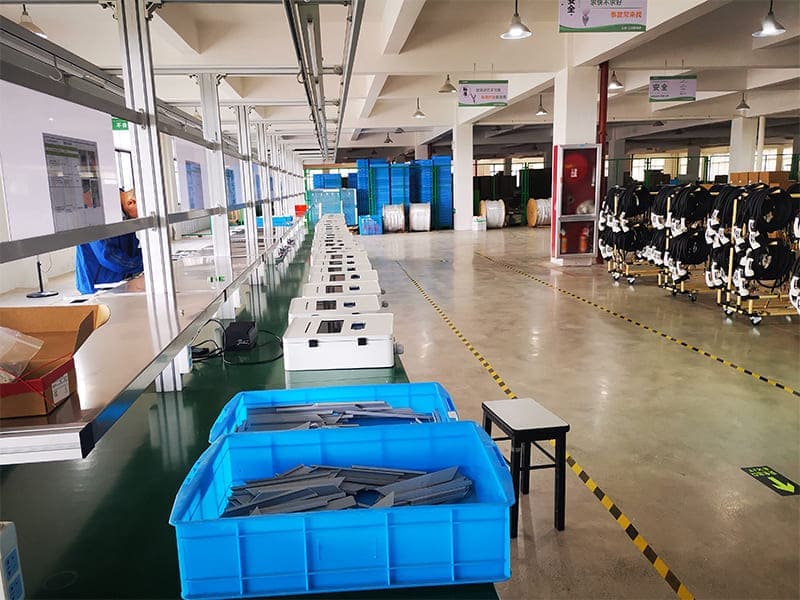Electric vehicle owners often face a key choice. They must select a home charging solution. The decision between a single phase and a 3 phase EV charging station is crucial. This choice impacts charging speed and electrical requirements. Understanding these differences is essential for every EV driver. This guide will explain the core distinctions. We will explore power, speed, and real-world applications.
Understanding the Basic Electrical Concepts
First, we must understand the electrical fundamentals. Single-phase power is common in many homes. It uses one alternating current waveform. Consequently, it delivers power in a single wave. This system is sufficient for most household appliances.
Conversely, a 3 phase EV charging station uses three waveforms. These waves are offset from each other. Therefore, they provide a more consistent and powerful flow. This results in a higher total power output. Many commercial buildings use this system.
Key Differences in Power and Charging Speed
The power delivery difference is significant. A single-phase station typically offers up to 7.4 kW. This is the standard for most residential installations. It provides a reliable overnight charge for many EVs.
However, a 3 phase EV charger station delivers more power. It can often provide 11 kW or even 22 kW. This represents a substantial increase in charging speed. For example, it can charge a car much faster.
Therefore, charging speed is the main advantage. A 3 phase EV charging station drastically reduces waiting time. It can fill a large battery in just a few hours. This is perfect for drivers with high daily mileage.
Infrastructure and Installation Requirements
Your home’s electrical supply dictates the choice. Many older homes only have single-phase power. Installing a 3 phase EV charging station may require a utility upgrade. This process can be costly and time-consuming.
Furthermore, the installation process differs. A single-phase setup is generally simpler. It uses a standard electrical circuit. However, a 3 phase EV charging station needs a specialized connection. An experienced electrician must handle this installation.
Always consult a professional before deciding. They will assess your electrical panel’s capacity. This ensures a safe and compliant installation for your charger.
Regional Variations and Market Availability
Electrical standards vary globally. North American homes rarely have three-phase power. Consequently, single-phase chargers dominate this market. The 3 phase EV charger station is less common there.
Meanwhile, Europe and many other regions widely use three-phase power. Therefore, the 3 phase EV charging station is a popular choice there. Many European EVs come with onboard chargers that support three-phase AC. Single phase EV charging station manufacturer and supplier
Manufacturers like Aegen cater to these regional needs. Aegen produces chargers for both single and three-phase systems. Their products are sold in Europe, South America, and the Middle East.
Aegen’s Product Portfolio for Every Need
Aegen is a leading global manufacturer. They provide components and complete charging stations. Their expertise covers both single-phase and 3 phase EV charging station models. They offer free technical support and customization.
For commercial use, Aegen supplies powerful DC fast EV charging station. These stations are ideal for shopping malls and fleet depots. They also make commercial AC stations for offices and apartments. Many of these are 3 phase EV charger station units.
For home use, Aegen offers various solutions. Their 7kW wall-mounted unit is a single-phase charger. Their 11kW and 22kW models are 3 phase EV charger station products. They also manufacture portable chargers for convenience.
Cost and Practicality Considerations
Cost is always an important factor. A single-phase charger is often more affordable. Its installation cost is also generally lower. This makes it a budget-friendly option for many.
A 3 phase EV charger station usually has a higher hardware cost. Its installation can also be more expensive. However, the time savings and convenience may justify the investment. This is especially true for business applications.
Consider your daily driving habits. A single-phase charge may be sufficient for most commutes. But a 3 phase EV charging station is better for larger vehicles. It is also ideal for drivers who need a quick turnaround.
Making the Right Choice for Your Situation
In conclusion, your choice depends on several factors. Assess your vehicle’s capabilities and your driving needs. Check your home’s existing electrical infrastructure. Finally, consult with a qualified electrician.
A single-phase charger offers simplicity and value. It meets the needs of a majority of EV owners. However, a 3 phase EV charging station provides superior speed and power.
Companies like Aegen help distributors supply the right products. They support both single and three-phase technologies. Therefore, you can find a perfect charging solution for any market. Choose wisely to enhance your electric driving experience.

